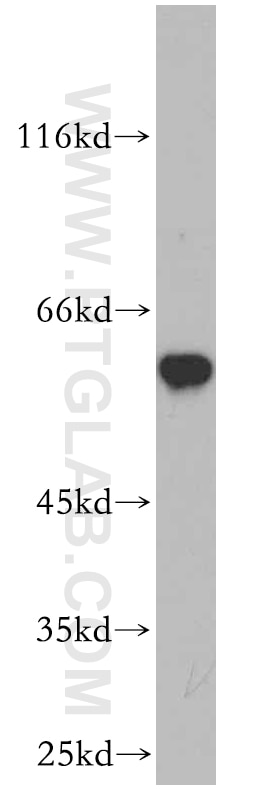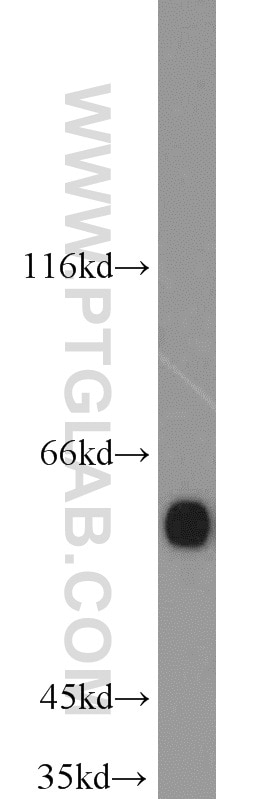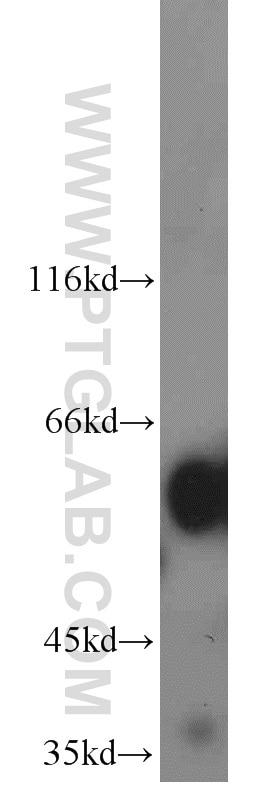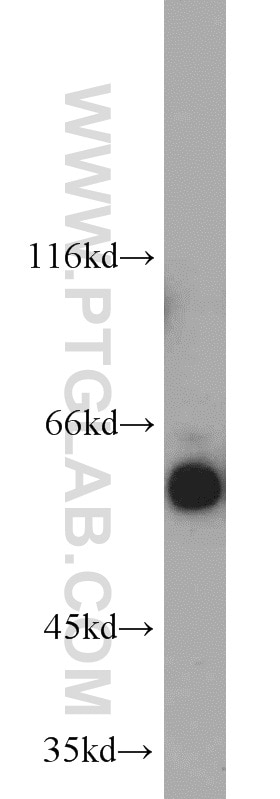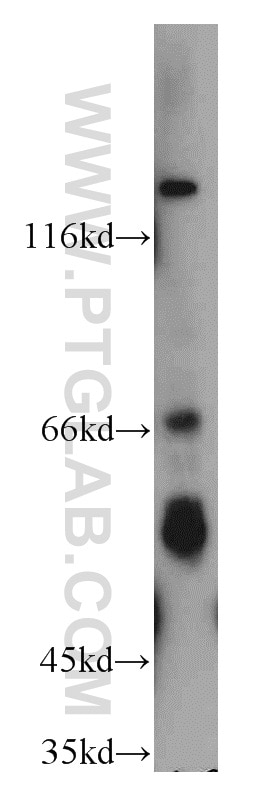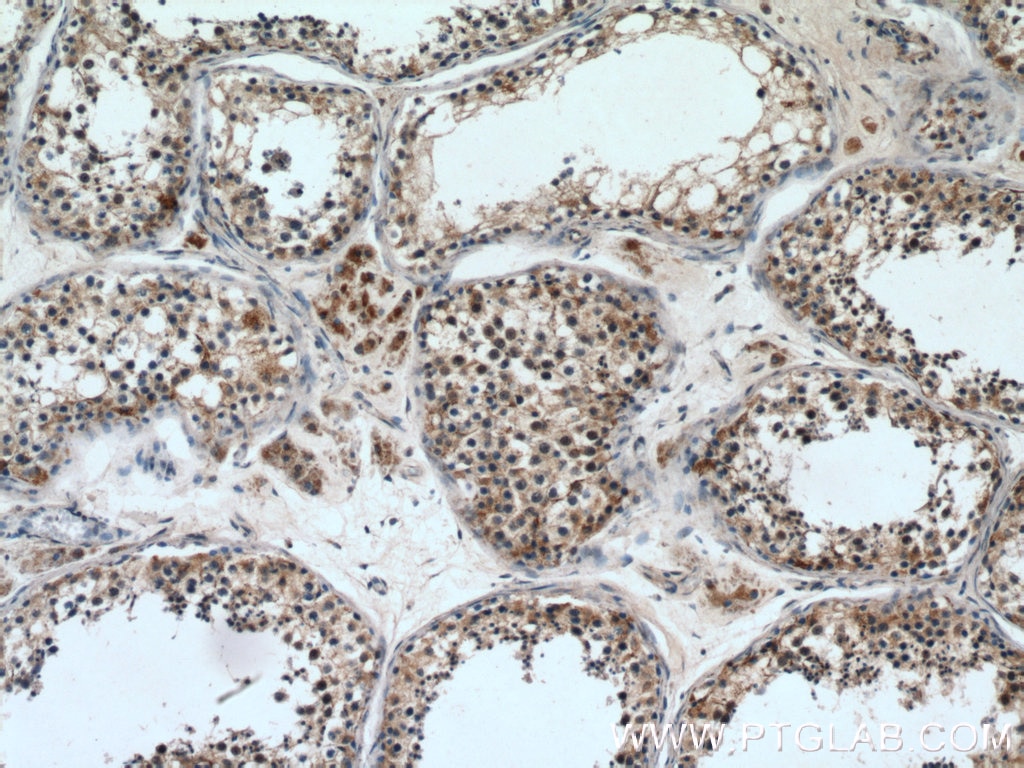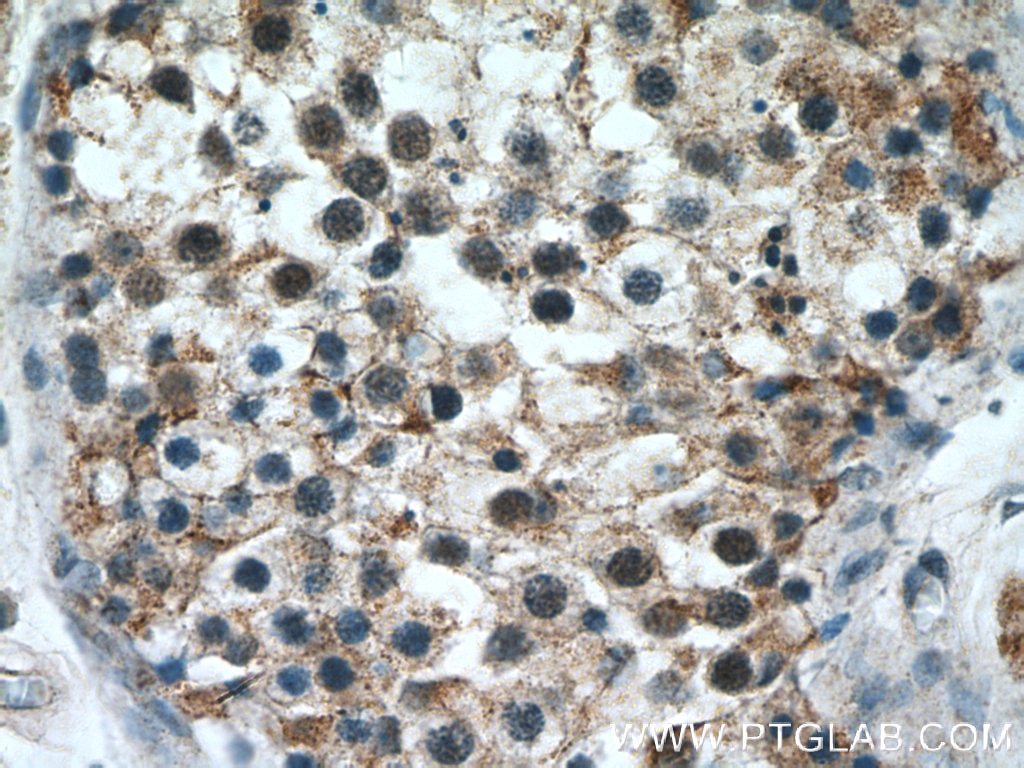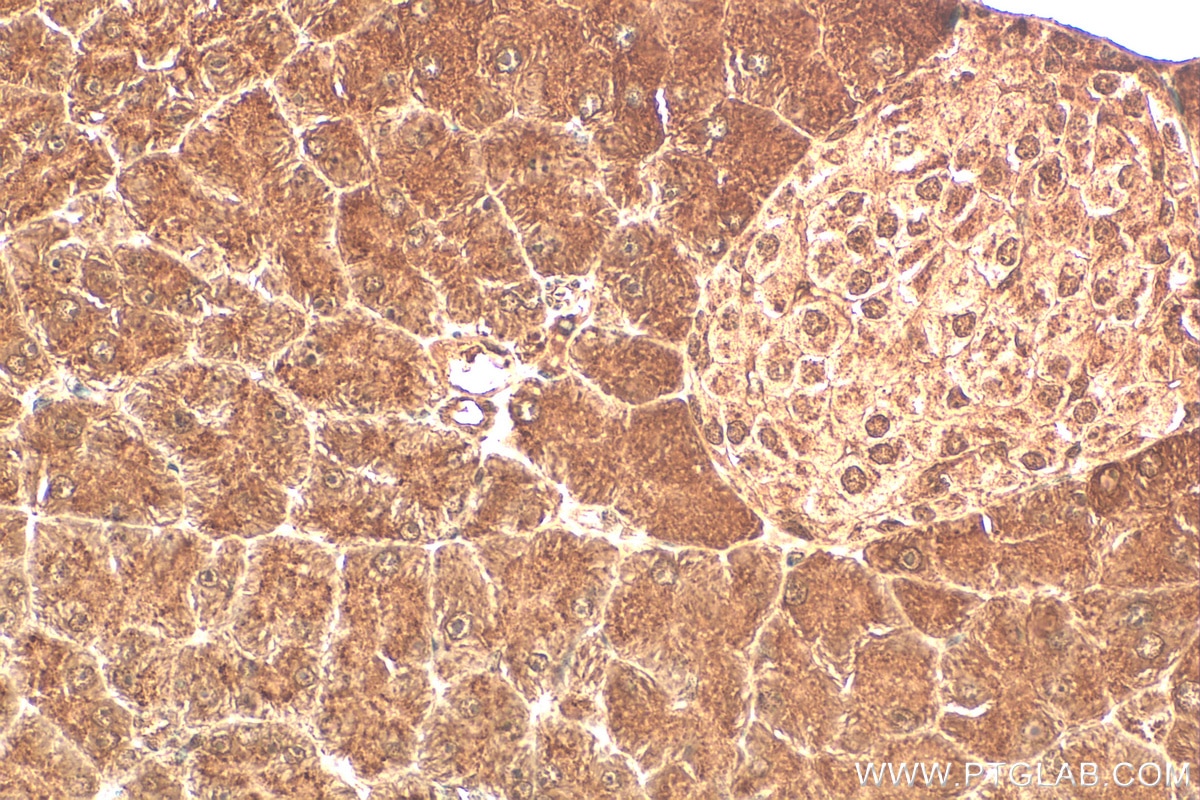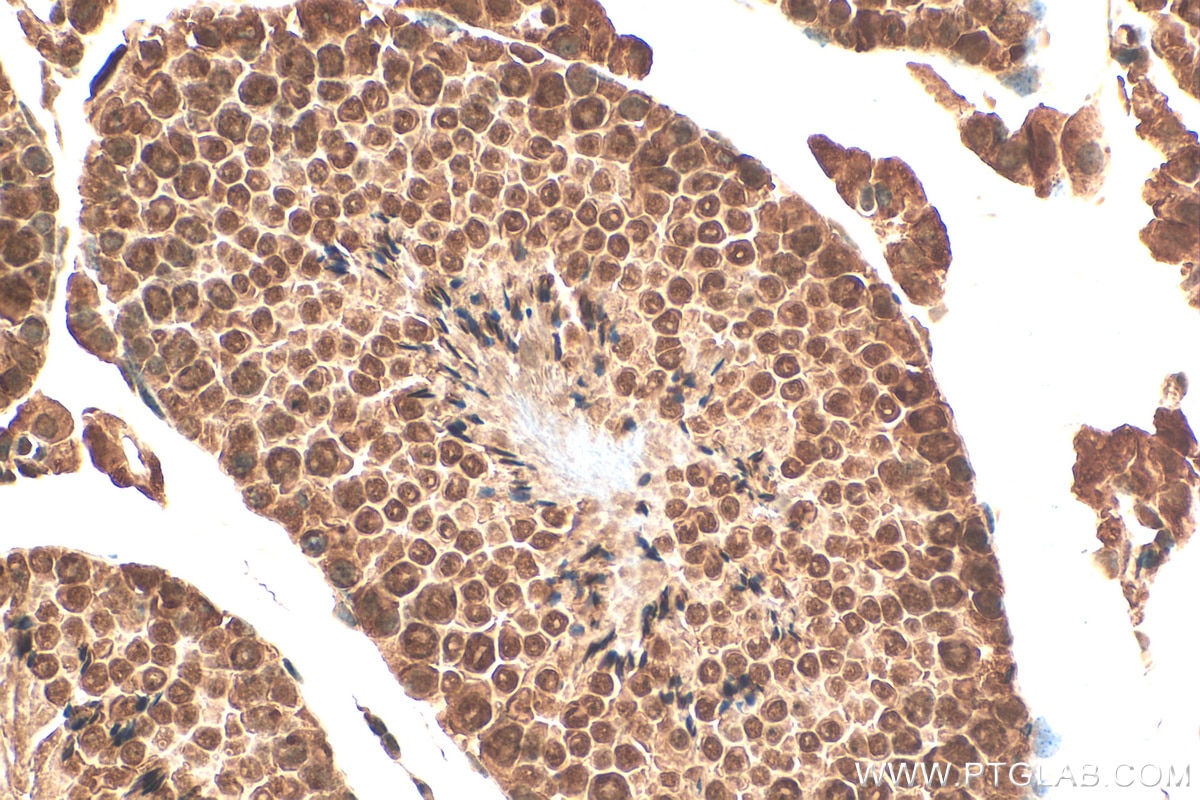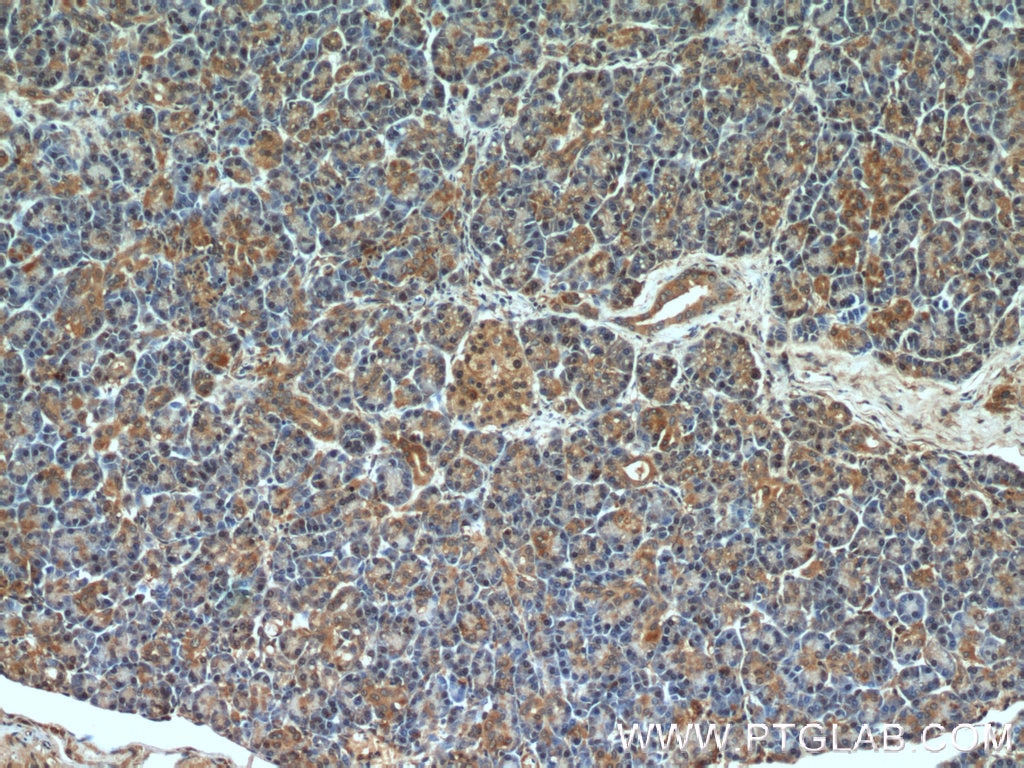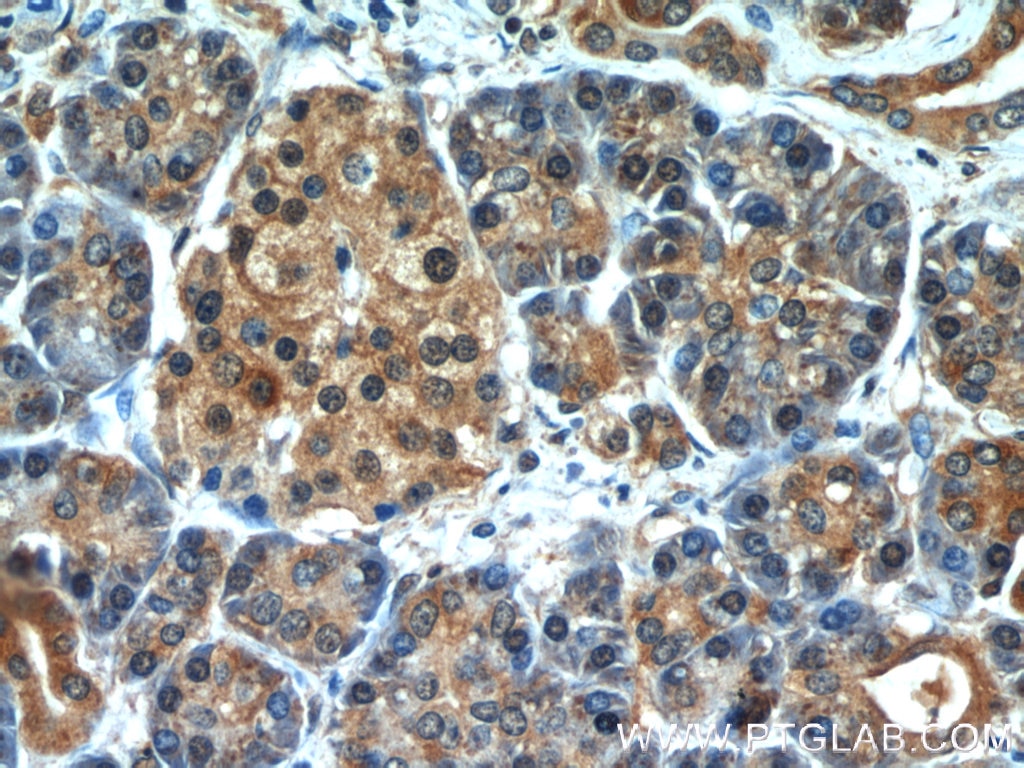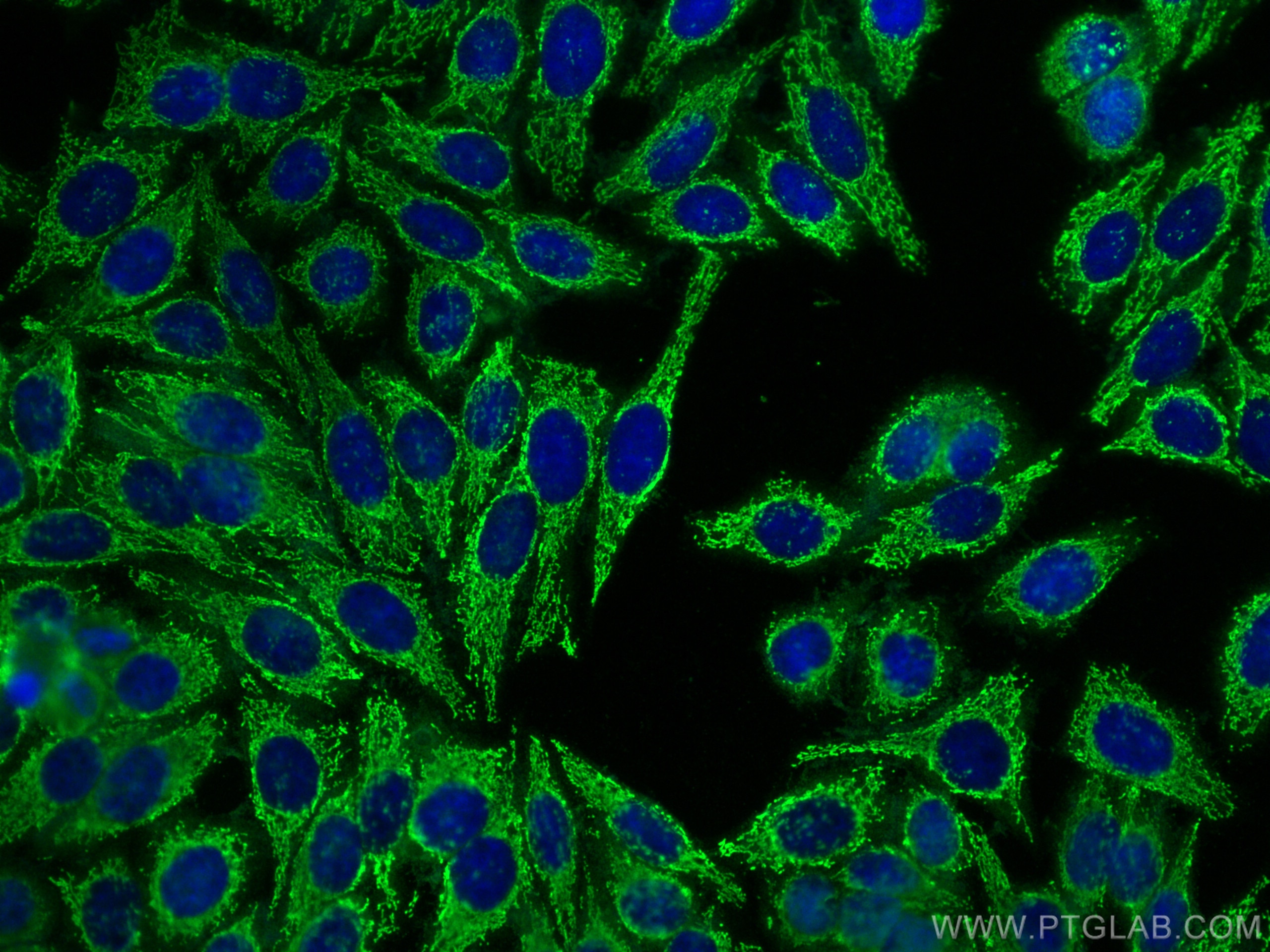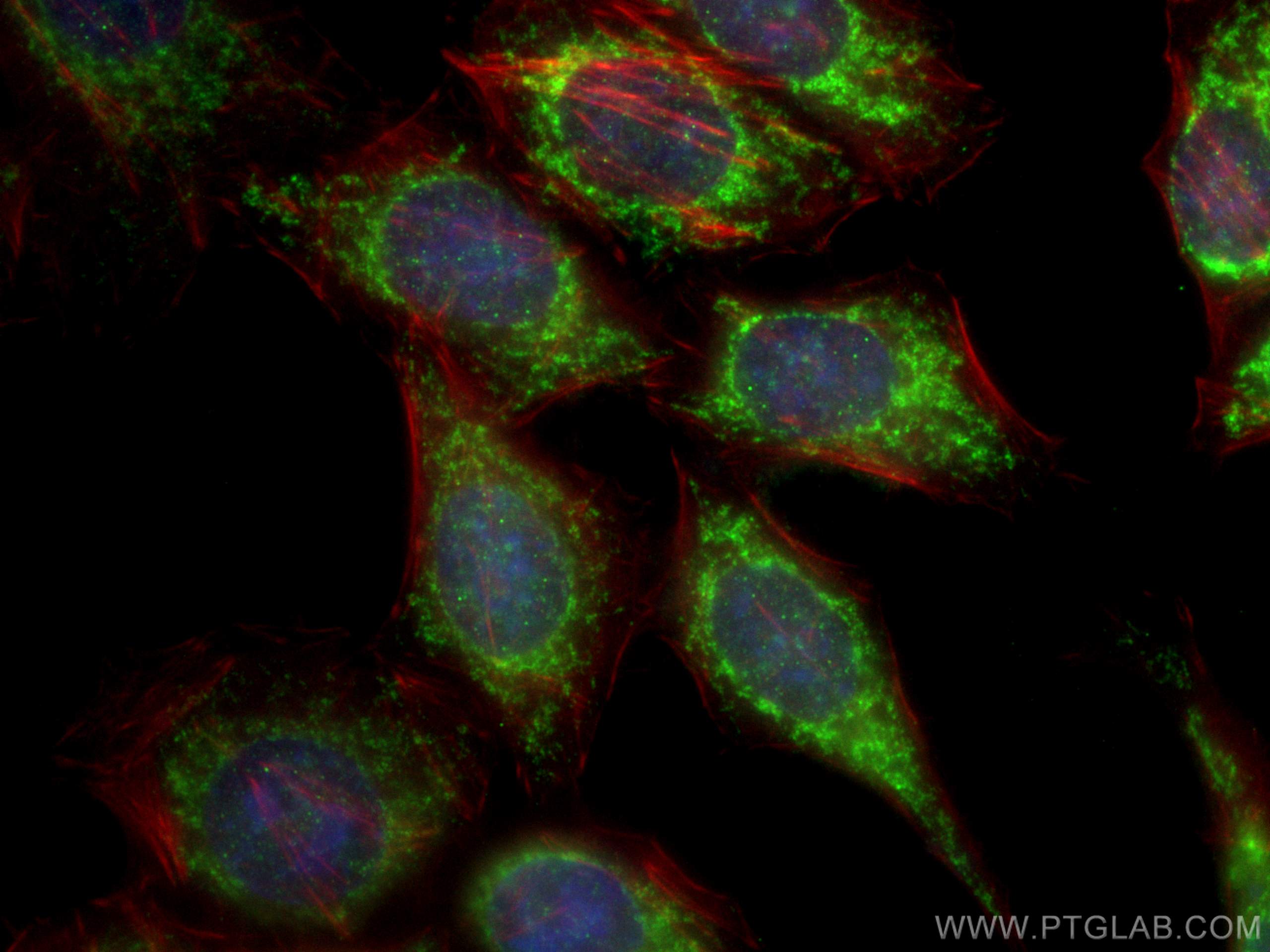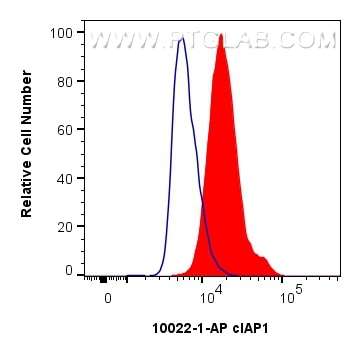- Featured Product
- KD/KO Validated
cIAP1 Polyklonaler Antikörper
cIAP1 Polyklonal Antikörper für WB, IHC, IF/ICC, FC (Intra), ELISA
Wirt / Isotyp
Kaninchen / IgG
Getestete Reaktivität
human, Maus und mehr (2)
Anwendung
WB, IHC, IF/ICC, FC (Intra), CoIP, ELISA
Konjugation
Unkonjugiert
Kat-Nr. : 10022-1-AP
Synonyme
Geprüfte Anwendungen
| Erfolgreiche Detektion in WB | Maus-Skelettmuskelgewebe, Jurkat-Zellen, Maushirngewebe, Mauslebergewebe, Maushodengewebe |
| Erfolgreiche Detektion in IHC | humanes Hodengewebe, humanes Pankreasgewebe, Maus-Pankreasgewebe, Maushodengewebe Hinweis: Antigendemaskierung mit TE-Puffer pH 9,0 empfohlen. (*) Wahlweise kann die Antigendemaskierung auch mit Citratpuffer pH 6,0 erfolgen. |
| Erfolgreiche Detektion in IF/ICC | HepG2-Zellen |
| Erfolgreiche Detektion in FC (Intra) | HepG2-Zellen |
Empfohlene Verdünnung
| Anwendung | Verdünnung |
|---|---|
| Western Blot (WB) | WB : 1:500-1:2000 |
| Immunhistochemie (IHC) | IHC : 1:50-1:500 |
| Immunfluoreszenz (IF)/ICC | IF/ICC : 1:200-1:800 |
| Durchflusszytometrie (FC) (INTRA) | FC (INTRA) : 0.40 ug per 10^6 cells in a 100 µl suspension |
| It is recommended that this reagent should be titrated in each testing system to obtain optimal results. | |
| Sample-dependent, check data in validation data gallery | |
Veröffentlichte Anwendungen
| KD/KO | See 2 publications below |
| WB | See 18 publications below |
| IHC | See 3 publications below |
| IF | See 2 publications below |
| CoIP | See 1 publications below |
Produktinformation
10022-1-AP bindet in WB, IHC, IF/ICC, FC (Intra), CoIP, ELISA cIAP1 und zeigt Reaktivität mit human, Maus
| Getestete Reaktivität | human, Maus |
| In Publikationen genannte Reaktivität | human, Maus, Ratte, Zebrafisch |
| Wirt / Isotyp | Kaninchen / IgG |
| Klonalität | Polyklonal |
| Typ | Antikörper |
| Immunogen | cIAP1 fusion protein Ag15203 |
| Vollständiger Name | baculoviral IAP repeat-containing 2 |
| Berechnetes Molekulargewicht | 618 aa, 70 kDa |
| Beobachtetes Molekulargewicht | 70 kDa, 55-60 kDa |
| GenBank-Zugangsnummer | BC016174 |
| Gene symbol | cIAP1 |
| Gene ID (NCBI) | 329 |
| Konjugation | Unkonjugiert |
| Form | Liquid |
| Reinigungsmethode | Antigen-Affinitätsreinigung |
| Lagerungspuffer | PBS with 0.02% sodium azide and 50% glycerol |
| Lagerungsbedingungen | Bei -20°C lagern. Nach dem Versand ein Jahr lang stabil Aliquotieren ist bei -20oC Lagerung nicht notwendig. 20ul Größen enthalten 0,1% BSA. |
Hintergrundinformationen
BIRC2 (also known as cIAP1) is a member of the inhibitor of apoptosis protein (IAP) family. The inhibitor of apoptosis (IAP) proteins are a family of anti-apoptotic regulators found in viruses and metazoans. BIRC2 is a nuclear shuttling protein, whose subcellular localization is mediated by the CRM1-dependent nuclear export pathway (PMID: 15265700). The protein is regulated transcriptionally and can be inhibited by mitochondrial proteins released in the cytoplasm upon apoptotic stimuli (PMID: 15187025). BIRC2 is also believed to be a critical regulator of vascular integrity and endothelial cell survival, thereby providing an additional target pathway for the control of angiogenesis and blood vessel homeostasis during embryogenesis, regeneration and tumorigenesis (PMID: 17934460). This BIRC2 antibody (10022-1-AP) can bind both full length (70kd) and cleaved form (60kd) of the protein.
Protokolle
| PRODUKTSPEZIFISCHE PROTOKOLLE | |
|---|---|
| WB protocol for cIAP1 antibody 10022-1-AP | Protokoll herunterladen |
| IHC protocol for cIAP1 antibody 10022-1-AP | Protokoll herunterladenl |
| IF protocol for cIAP1 antibody 10022-1-AP | Protokoll herunterladen |
| FC protocol for cIAP1 antibody 10022-1-AP | Download protocol |
| STANDARD-PROTOKOLLE | |
|---|---|
| Klicken Sie hier, um unsere Standardprotokolle anzuzeigen |
Publikationen
| Species | Application | Title |
|---|---|---|
Nat Genet Birc2 (cIap1) regulates endothelial cell integrity and blood vessel homeostasis.
| ||
Mol Cell Liquid phase separation of NEMO induced by polyubiquitin chains activates NF-κB. | ||
Mol Cell A cytoplasmic ATM-TRAF6-cIAP1 module links nuclear DNA damage signaling to ubiquitin-mediated NF-κB activation.
| ||
Acta Pharm Sin B A new perspective of triptolide-associated hepatotoxicity: the relevance of NF- κ B and NF- κ B-mediated cellular FLICE-inhibitory protein. | ||
Dev Cell Selective Autophagy of Mitochondria on a Ubiquitin-Endoplasmic-Reticulum Platform. | ||
J Immunol Differential TRAF3 utilization by a variant human CD40 receptor with enhanced signaling. |
Rezensionen
The reviews below have been submitted by verified Proteintech customers who received an incentive for providing their feedback.
FH S (Verified Customer) (09-23-2024) | Excellent
 |
